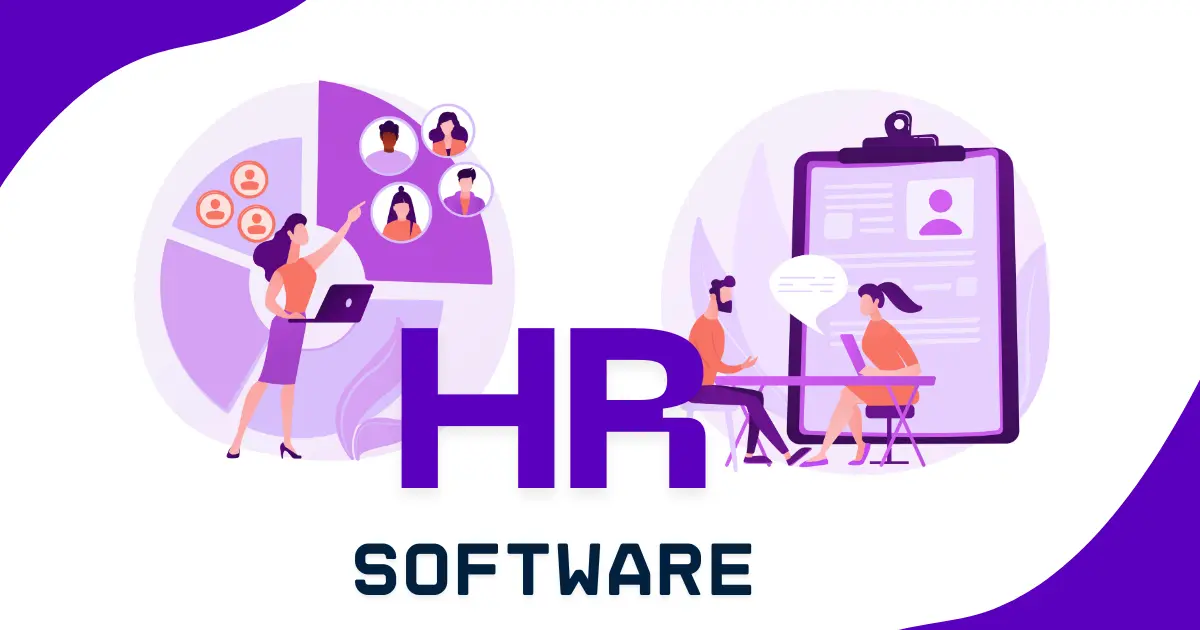Only 35% of projects finish successfully. That means 65 out of 100 projects fail to deliver what they promised.
Think about that for a moment. Your team works hard for months. Everyone stays late, misses deadlines, and feels stressed. But in the end, the project still fails.
This isn’t just frustrating, it’s expensive. Companies waste millions of dollars every year on failed projects.
The good news? These problems aren’t random. The biggest challenges of project management follow clear patterns. And once you understand these patterns, you can fix them.
In this article, you’ll discover the 15 most common project management challenges that derail projects.
More importantly, you’ll learn proven solutions that actually work. Organizations that master these solutions see their success rates jump from 35% to 77%.
Let’s dive in.
Challenge #1: Not Having Clear Goals
Without clear goals, your project starts dying from day one. Team members work on different things. Stakeholders want opposite results. Nobody knows what “done” looks like.
This is the number one reason projects fail. In fact, 37% of all project failures happen because goals weren’t clear from the start.
This happens because leaders and project managers don’t talk enough during planning. Nobody writes down what success means. Different people imagine different outcomes.
The solution is to create goals using the SMART method.
Each goal must be Specific, Measurable, Achievable, Relevant, and Time-bound. Write everything in a project charter—a one-page document that lists your business case, goals, success metrics, and deliverables. Make every stakeholder sign it. Then reference it in every meeting when priorities clash.
This one-page document will save you countless headaches in the future.
Challenge #2: Scope Creep Killing Your Budget
Scope creep sneaks up on every project.
It starts small: “Can we add just one more feature?” Then another request comes. And another. Before you know it, your simple project has doubled in size.
The damage is real. Every 10% increase in scope adds 15-20% to your costs. Your timeline stretches. Your team burns out. Stakeholders get frustrated.
This happens because your initial scope wasn’t clear. Or stakeholders keep adding requirements mid-project. And you don’t have a formal way to say “no” or “let’s evaluate that.”
Here is how you can fix this: set up a formal change management process. Create a change control board—a group that reviews all new requests. Start a “parking lot” document for every change idea.
When someone requests a change, ask four questions: How will this affect the timeline? The budget? Resources? Does it align with our strategy?
This approach cuts scope bloat by 40%. It respects everyone’s ideas while protecting your project.
Challenge #3: Deadlines Keep Slipping
Unrealistic deadlines destroy projects.
They push teams to rush. Quality drops. People burn out. And despite all the pressure, projects still finish 2-3 weeks late on average.
These bad deadlines happen when companies promise results without checking if they have enough resources. They don’t look at historical data. They ignore capacity constraints.
Gather three estimates for each task—optimistic (best case), pessimistic (worst case), and most likely. Then use this formula: (Optimistic + 4×Most Likely + Pessimistic) ÷ 6. Add a 10-20% buffer for surprises.
This formula improves your accuracy by 25-35%. It accounts for uncertainty. Plus, when you break projects into smaller milestones, you catch delays early and adjust quickly.
Challenge #4: Communication Breakdown That Costs Millions
Poor communication kills projects one-third of the time.
Communication breaks down when there’s no formal plan. Different departments use different tools. Remote teams miss important updates. Information gets trapped in silos.
Build a comprehensive communication plan that answers three questions:
Who needs information?
When do they need it?
What channel should you use? Set up daily 15-minute stand-ups for the team. Hold weekly status meetings. Schedule monthly reviews for stakeholders. Make your project management tool the single source of truth.
Here’s a pro tip: For every formal email or meeting, have five informal check-ins. Quick Slack messages. Water cooler chats. Coffee conversations. These informal touchpoints catch problems before they explode.
Challenge #5: Managing Resources Without Burning Out Your Team
When the wrong people work on the wrong tasks, everything slows down. Key team members get overworked. Other skilled people sit idle. You can’t see who’s available or overloaded.
Resources get mismanaged because companies don’t track capacity centrally. They assign people by availability, not by skills. Multiple projects compete for the same people.
Create a resource capacity dashboard that shows utilization rates, skills, and availability for everyone.
Aim for 80-85% utilization, not 100%. That 15-20% buffer prevents burnout and handles unexpected issues. Cross-train team members so they can flex between tasks. Use resource management software for real-time tracking.
When someone hits 90%+ utilization, immediately rebalance their workload or push back on new requests.
Challenge #6: Keep Your Budget Under Control
Budget overruns plague 55% of failed projects.
Without real-time tracking, overspending hides until it’s too late to fix. High-maturity organizations stay within budget 56% of the time. Low-maturity organizations? Only 21%.
Budgets explode because teams skip detailed planning. They don’t create contingency reserves. Nobody tracks costs in real-time. Resource estimates are guesses.
Start with a detailed budget using a Work Breakdown Structure (WBS) that links costs to specific tasks. Set aside 10% of your total budget as a contingency reserve. Track costs weekly and review variances. Look for patterns.
Pro tip: Use the 50/30/20 rule. Allocate 50% to direct work, 30% to overhead, and 20% to contingency and reserves. This conservative approach prevents the common mistake of underfunding projects.
Challenge #7: Finding and Fixing Risks Before They Explode
Unidentified risks turn into expensive crises.
When you discover risks late, fixing them costs far more. Organizations without formal risk processes face 2-3 times more crisis situations.
Teams skip thorough risk assessment because they’re overconfident. They don’t engage stakeholders in identifying risks. They forget to evaluate how changes might introduce new risks.
Conduct a comprehensive risk assessment before launching your project. Create a risk register that documents each risk, its associated probability, its potential impact, and your corresponding mitigation plan. Develop detailed contingency plans for high-impact, high-probability risks.
Use a Risk Priority Matrix that plots probability versus impact.
Focus your energy on mitigating high-probability, high-impact risks first. Review your risk register monthly, as circumstances are constantly changing. One of the key challenges in project management is staying ahead of risks rather than reacting to them.
Challenge #8: Making Sure Everyone Knows Their Role
When responsibilities are unclear, deliverables get missed.
Teams play the blame game. Trust erodes. When problems occur, nobody can identify the root cause.
This happens because roles weren’t defined clearly at the project start. There’s no visibility into who’s doing what. Project managers don’t follow up consistently.
Create a RACI matrix for all major project activities.
RACI stands for Responsible (who does the work), Accountable (who makes decisions), Consulted (who provides input), and Informed (who needs updates). Share this matrix at your kickoff meeting. Update it quarterly. Use project management tools that show clear task assignments.
RACI clarity eliminates role-related disputes. When conflicts arise about who should handle something, simply refer to the matrix.
Challenge #9: Breaking Down Silos Between Teams
When departments work in silos, projects suffer. Teams duplicate effort. Priorities conflict.
This happens when project objectives aren’t clear across departments. Different teams use different communication styles. Leadership doesn’t unify everyone. Cross-functional meetings don’t happen regularly.
Establish shared goals that every team understands and commits to. Implement weekly cross-functional syncs. Create a shared dashboard that displays interdependencies and provides real-time status updates. Build trust through transparent communication.
Teams using a single source of truth dashboard reduce coordination overhead. When everyone sees the same information, alignment happens naturally.
Challenge #10: Closing the Skills Gap on Your Team
Project management tools and methods evolve quickly. This creates talent shortages.
Companies don’t invest enough in continuous learning. Business needs change faster than training programs. Teams are assigned based on who’s available, not who’s most qualified.
Invest 5-10% of your project budget in continuous training. Conduct an annual skills gap analysis to identify weaknesses. Create mentorship programs where experienced team members coach newer ones. Track certifications like PMP or Scrum Master.
Your team gets better, and they’re more likely to stay.
Challenge #11: Aligning All Your Stakeholders
Different stakeholder expectations create conflict.
Even when projects are delivered technically, stakeholders often feel dissatisfied. In fact, projects fail because business objectives and project direction don’t align.
This happens when teams skip stakeholder analysis. They don’t communicate regularly with stakeholders. Stakeholders get excluded from requirements gathering. Competing interests aren’t managed.
Conduct stakeholder analysis early. Identify everyone who has an interest or influence in your project. Map their power and interest levels. Create engagement plans with tailored communication strategies for each group. Engage stakeholders in critical decisions, not just status updates.
Pro tip: Use a Power-Interest Matrix. Plot stakeholders by their influence (high/low) and interest (high/low). High-power, high-interest stakeholders need regular, detailed updates. Low-power, low-interest stakeholders just need occasional summaries.
This is one of the most critical project management challenges and solutions to master.
Challenge #12: Getting Requirements Right the First Time
Ambiguous requirements cause a lot of rework.
When specifications are unclear, developers build the wrong solutions. Teams waste 2-4 weeks clarifying what should have been clear from the start.
Requirements get messed up when stakeholders aren’t involved enough. Project goals are unclear. Teams rush through requirements gathering. Nobody validates whether requirements are technically feasible.
Involve key stakeholders and subject matter experts in gathering requirements.
Use structured techniques: interviews, surveys, workshops, and use cases. Document everything in clear, testable language. Validate requirements against feasibility and business goals. Get formal approval before moving forward.
Use the 5 Ws and H method: Who (stakeholder), What (requirement), When (timing), Why (business rationale), Where (system or module), and How (implementation). This ensures every requirement is complete and unambiguous.
Challenge #13: Catching Quality Issues Early
Late-discovered defects cost 10-100 times more to fix than early detection.
When defects escape to production, they damage customer relationships and revenue. Organizations that test early reduce defect escape.
Quality suffers when QA resources are insufficient. Teams test only at the project end. Quality standards are weak. Developers and QA don’t communicate enough. Deadline pressure overrides quality concerns.
Define quality standards and acceptance criteria early.
Implement QA in every project phase, not just at the end. Use continuous integration and automated testing. Establish quality metrics and dashboards for visibility.
The shift-left approach moves testing earlier in the process. This catches defects when they’re cheap to fix.
Challenge #14: Managing Change Without Resistance
Organizations with excellent change management meet or exceed their objectives 88% of the time. Without it, 60% of organizational changes fail. Projects are completed successfully but fail to generate the expected benefits.
Change management gets skipped during project planning. Stakeholder engagement in the change process is insufficient. New processes clash with organizational culture. Training and support are inadequate. These are common challenges with project management that teams overlook.
Integrate change management into project planning from day one. Allocate 15-20% of project time and budget to change management. Create comprehensive impact assessments. Develop clear communication explaining why the change is necessary. Provide thorough training and support. Engage change champions who can influence others.
Organizations that allocate 15-20% of their budget to change management achieve 88% success rates. It’s worth the investment.
Challenge #15: Coordinating Multiple Projects Successfully
Managing multiple concurrent projects competing for resources creates cascading delays.
Without dependency visibility, organizations waste a lot of coordination time. Limited cross-project visibility prevents strategic agility.
This happens when there’s no portfolio management strategy.
Projects operate in silos. Executive oversight is inadequate. Resource allocation happens at the project level instead of the portfolio level. Understanding the critical situation in project management across your portfolio is essential.
Establish a Portfolio Management Office (PMO) with clear governance. Create a dependency management process that identifies all inter-project relationships. Implement portfolio-level dashboards for complete visibility. Prioritize projects by strategic alignment and resource availability.
Create a dependency register that documents dependent projects, dependency nature, owners, status, and delay impact. Review it monthly. This prevents one delayed project from cascading through your entire portfolio.

Bonus Section: Preventing Challenges Before They Start
The best way to handle project management challenges is to stop them before they happen.
TaskFino is an all-in-one office management software that gives you everything you need to prevent these 15 challenges from derailing your projects. The platform’s Task Management module helps you set clear goals with milestone tracking and deadline management, while the integrated system stops scope creep by connecting every moving part of your business in one synchronized ecosystem.
Track employee attendance and working hours accurately through the Attendance Management System to create realistic deadlines, while the HRMS module’s centralized employee database prevents burnout by giving you real-time visibility into team capacity and availability.
Communication becomes effortless with the digital Notice Board for company updates and the centralized platform that serves as your single source of truth.
The Accounting module catches budget overruns early with real-time financial tracking and automated reports, while the Asset Management feature tracks company resources and ensures effective utilization to prevent resource conflicts.
TaskFino’s designation-based hierarchy establishes clear reporting lines and role-based access for better accountability, eliminating role confusion from day one.
With the Payroll module automating calculations and the Loan module managing employee financial needs, you handle change smoothly without resistance. TaskFino doesn’t just help you react to problems; it prevents them from happening in the first place by connecting HR, CRM, Accounting, Task Management, and beyond into one powerful space where everything works together.
Why These Challenges Keep Happening
Most of these 15 project management challenges trace back to two root causes: poor communication and inadequate planning.
When organizations skip structured planning frameworks and clear communication, they repeat the same mistakes across multiple projects.
Organizations that undervalue project management see a lot of projects failing. Yet project managers don’t follow defined methodologies—making their projects less likely to succeed.
The solution is clear: Invest in project management maturity.
Organizations with high PM maturity deliver on time 67% of the time. Low-maturity organizations only hit deadlines 30% of the time. High-maturity organizations stay within budget 56% of the time. Low-maturity organizations? Just 21%.
The data doesn’t lie. Better project management practices directly improve success rates.
Your Path Forward
These 15 challenges in project management connect to each other. Undefined goals lead to scope creep. Poor communication creates misaligned expectations. Inadequate resource planning causes quality issues and timeline delays. Fix one problem, and you often prevent three others.
Each challenge has a proven solution.
Start with two foundations, clear goals (Challenge #1) and communication (Challenge #4). Master these first. They prevent 70% of other challenges from occurring. Once you’ve got these down, systematically address the remaining challenges.
The investment pays off. Organizations that invest in PM practices waste 28 times less money. Project management software alone saves employees 498 hours annually—that’s equivalent to $50,000+ in productivity gains per person.
Your next project’s success depends on acknowledging these challenges and committing to systematic improvement. The choice is yours: Continue struggling with that dismal 35% success rate, or join the high-performing organizations that deliver results 77% of the time. The projects you deliver next year will determine whether your organization thrives or falls behind.
Frequently Asked Questions
1. What software makes office management easy?
Taskfino makes office management easy by combining task tracking, project management, team collaboration, and deadline management in one intuitive platform—designed to integrate seamlessly with your existing workflow.
2. What are the key features of good office management software?
Essential features include task tracking, resource management, document sharing, calendar integration, project reporting, and compatibility with Slack, Teams, and cloud storage.
3. How do I choose the right office management software for my business?
Assess your team size and hybrid needs, check for system integrations, ensure simple UI for quick adoption, evaluate support and security, and demo several options before deciding.
4. What are the benefits of using office management software?
Benefits include increased efficiency through automation, better collaboration with centralized tools, improved organization, scalability for growth, and enhanced remote work support.
5. Can office management software help with hybrid workplaces?
Yes, Taskfino helps hybrid teams stay coordinated with centralized task management, project tracking, and team collaboration tools that keep everyone aligned whether they’re working in-office or remotely.




